But the angel answered and said to the women, “Do not be afraid, for I know that you seek Jesus who was crucified. He is not here, for He is risen, as He said. Come, see the place where the Lord lay.”
Matthew 28:5–6
All of the gospel writers agree that Jesus, who had suffered death by crucifixion, rose from the dead on the third day. Today, Christians celebrate the resurrection of Jesus every year at Easter.

Yet, even from the beginning, not everyone believed in Jesus’ resurrection. In fact, the Jewish religious leaders immediately suggested that Jesus’ disciples stole his body out of the tomb. This version of the event became widespread. Over 100 years later, Justin Martyr’s writings indicate that it was a well-known and widely-accepted view at that time.1
The views expressed in this article reflect those of the author mentioned, and not necessarily those of New Creation.
Other views emerged with time. One theory suggests that Jesus’ resurrection was spiritual rather than physical.2 Another view states that Jesus never died in the first place. His resurrection was merely him waking from a coma.3
So, what is the truth of the matter? Can we prove that Jesus physically rose from the dead? What does archaeology have to say about Jesus’ resurrection?
First, it is important to know that we cannot prove the resurrection. This is because proof requires a repeatable experiment, and Jesus’ resurrection was a one-time event. Since we cannot repeat it, we scientifically cannot prove it.
What we can do, however, is examine the archaeological and textual evidence pertaining to the resurrection. We can find out what early historians, both Christian and secular, believed. We can also look at some artifacts that are relevant to the question.
Did Jesus Die?
Before we can consider the question of whether Jesus rose from the dead, we must first determine whether He actually died on the cross. One theory regarding Jesus’ resurrection, known as the resuscitation view, suggests that Jesus did not die during His crucifixion. Rather, He swooned or was drugged. People mistook him for dead and buried him. After three days, He woke up from his unconscious state, convincing those who saw him afterward that he had risen from the dead.4

However, there are several reasons that we can be quite certain that Jesus died on the cross. First, the Roman soldiers were convinced that He was dead. When the Roman soldiers broke the legs of the other crucifixion victims to speed up their death, they did not break Jesus’ legs because He was already dead (John 19:32–33). Surely these Roman executioners were able to recognize whether their victim was living or dead.
Second, Josephus, a historian from the first century AD, testified to the low survival rate of crucifixion victims. He wrote that he came to a village and discovered three of his acquaintances being crucified. He begged for their pardon, which Titus, the military commander, granted. They took the three men down from their crosses and a doctor tended to them. Even so, two of them died.5 If these two men, released while they were clearly still alive, died from their wounds, it seems impossible that Jesus, who gave every appearance of being dead, could have survived the ordeal.
Third, one of the Roman soldiers pierced Jesus’ side with a spear (John 19:34). This certainly would have killed him, were he not already dead.
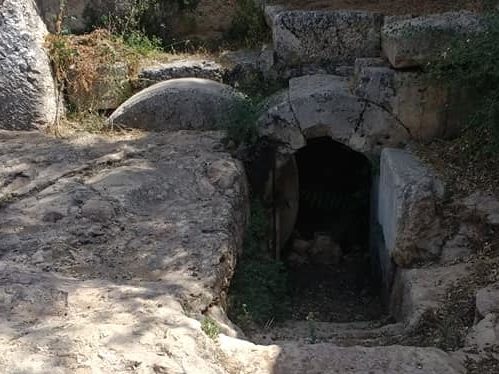
Finally, even if Jesus did survive His crucifixion, Joseph of Arimathea and Nicodemus prepared His body for burial, which involved binding it tightly in a cloth laden with spices (John 19:40). It would have been impossible (short of a miracle) for Jesus to free himself from these clothes. This is evident from John 11:44, which talks about Lazarus. When Jesus raised Lazarus from the dead, the people had to unbind him and set him free. Additionally, a heavy stone sealed the entrance to the tomb, which (short of a yet another miracle) would certainly have been impossible to move from the inside.
For these reasons, the resuscitation view is not a plausible theory. It is certain that Jesus did indeed die on the cross.
The Three Tombs of Jesus
According to Matthew, Joseph of Arimathea buried Jesus in Joseph’s own tomb (Matthew 28:57–60). The gospels describe this as being a new tomb, which had never been used (John 19:41). It was hewn out of stone (Luke 23:53), and sealed with a rolling stone (Mark 15:46). It was in a garden at the place where Jesus’ crucifixion occurred (John 19:41). We will take a look at three tombs in Jerusalem, each of which scholars have proposed to be the one in which Jesus lay.
The Talpiot Tomb
In the 1980’s, archaeologists excavated a tomb in the Talpiot neighborhood of Jerusalem. It contained ten ossuaries. An ossuary is a stone box used for secondary burial. This was a common Jewish burial method in the time of Jesus. The deceased person would first be buried in a rock-hewn tomb. Later, after the flesh had decomposed, the family would return, gather up the bones, and place them in an ossuary. This would free up the tomb for the next funeral in the family. They would place the ossuary in one of several niches carved into the wall of the tomb.
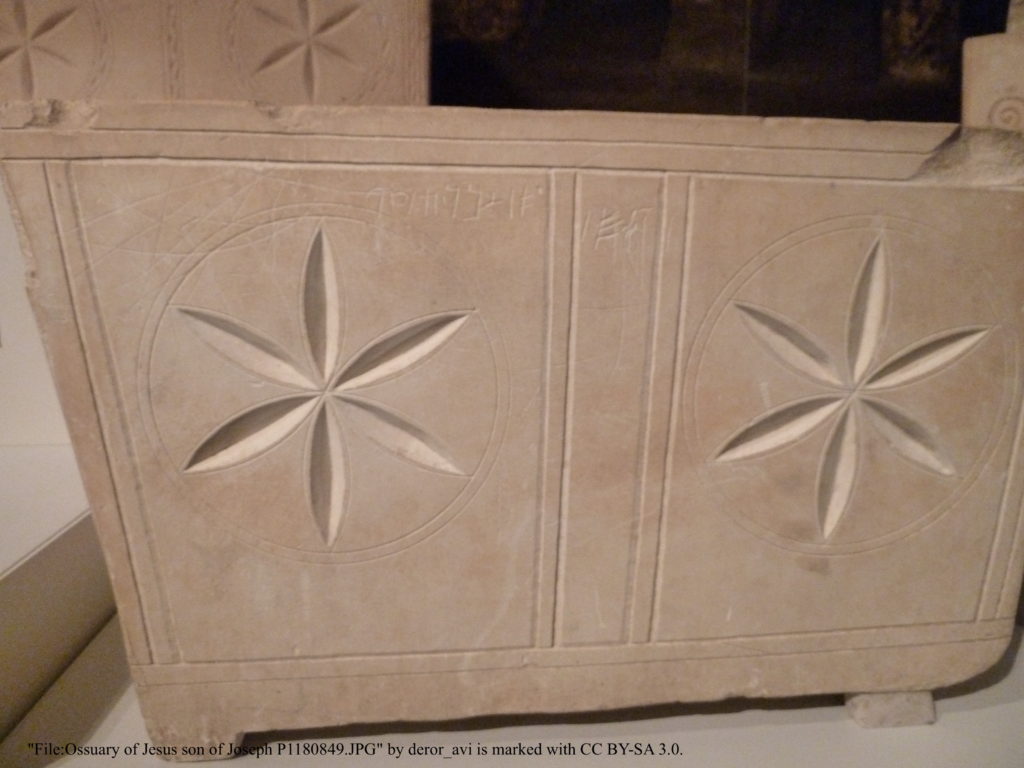
Six of the ossuaries in the Talpiot tomb had names inscribed on them. These included Y’shua bar Yosef (Jesus son of Joseph), Maria (Mary), Yose (Joses), Yehuda bar Yeshua (Judah son of Jesus), Mariamne e Mara (Mariamne known as Mara), and Matya (Matthew). Since several of these names are those of Jesus’ family members, some scholars have suggested that this is the tomb of Jesus, his mother, brother, wife, and son.
If the bones in the ossuary of Y’shua bar Yosef (Jesus son of Joseph) are actually the bones of Jesus Christ, and some of the other ossuaries contain those of his wife and his son, then the gospel narratives are sadly incorrect in multiple aspects, and Jesus never rose from the dead.
Was Jesus Buried in the Talpiot Tomb?
However, the names inscribed on the ossuaries were very common Jewish names during the time of Jesus. Additionally, only the first three of the listed ossuary inscriptions match the names of members of Jesus’ family as described in the New Testament. It is quite possible that another family had members with these same names.
Another major problem for this theory is that there is strong evidence suggesting that Jesus’ tomb was empty after his resurrection. His dead body disappeared.
First, the disciples claimed that Jesus had risen from the dead. They held this view so strongly that they were willing to die for their belief. If Jesus’ body were still in the tomb, it would be easy to check and discredit this claim.
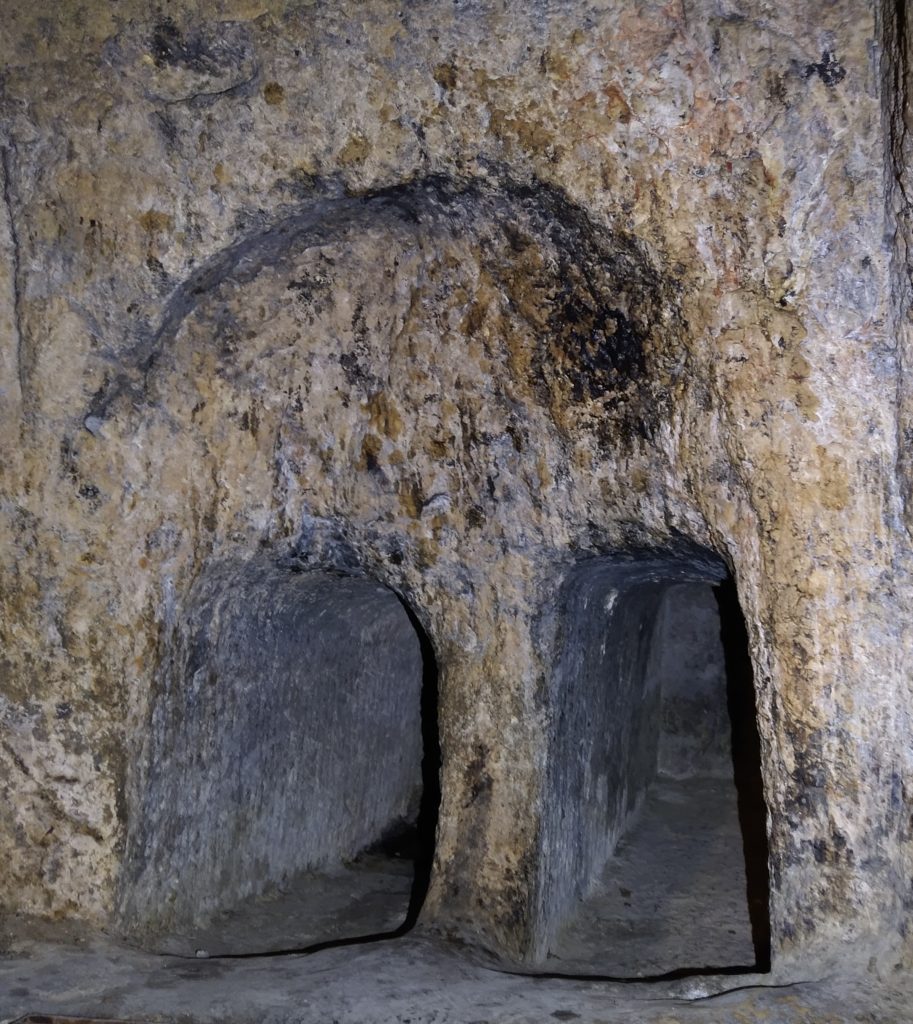
Second, the religious leaders believed that Jesus’ body was no longer in the tomb. That is clear from the fact that they had to provide an explanation for what had happened to it.
Third, a royal edict of Caesar, known as the Nazareth Inscription, suggests that Caesar himself believed that Jesus’ body was no longer in the tomb. I will discuss the Nazareth Inscription in more detail below.
It is clear that Christians, Jews, and Romans all understood that Jesus’ tomb was empty. There were differing views regarding what had happened to Him, but they all agreed that the body was gone. Even if the disciples had stolen Jesus’ body, they would have had to bury Him in a secret location, not in His own family tomb. For all these reasons, the Talpiot tomb cannot be the final resting place of Jesus.
The Garden Tomb
This tomb, located north of the Old City of Jerusalem, lies in a beautiful garden. It is quiet and peaceful, an oasis in the bustle and noise of Jerusalem. But is it the tomb of Jesus?
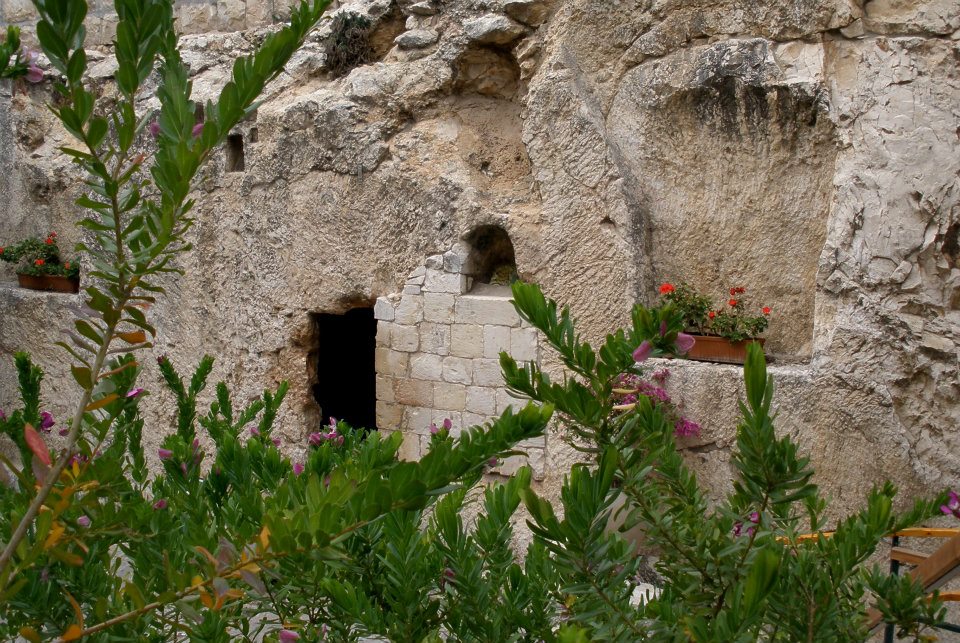
The discovery of the Garden Tomb occurred in 1867. Nearby is a rocky cliff. Its craigs resemble the features of a skull. Thus, some early explorers thought it might be Golgotha, the Place of the Skull. Since John 19:41 indicates that Jesus was buried near the site of his crucifixion, they logically concluded that the nearby tomb was the one in which Jesus lay.
However, there is a major problem with this identification. The Garden Tomb is of a style common to the Iron Age II, the period of the kings of Israel and Judah. That means that it went into use 700 years before the time of Jesus. In fact, archaeologists have discovered several other Iron Age II tombs in the area. The garden tomb was clearly part of an Iron Age II cemetery.6
Iron Age II tombs consist of an area for the mourners to stand and a burial area, which usually has two or three benches on which to lay the deceased. This is unlike Roman-era Jewish tombs, the type in which Jesus’ burial occurred. Those consist of a central burial area with loculi, or niches, all around in which to place ossuaries.
Because the Garden Tomb dates to the wrong time period, it does not fit the description of the tomb in which Jesus lay. That was a new tomb which nobody had used before.
The Church of the Holy Sepulchre
This is the traditional burial place of Jesus. Today, the church at the site is a large structure that incorporates both the tomb and a rocky outcropping identified as Golgotha. Although very little remains of the tomb today, several other Roman-era tombs in the area testify to the fact that this was a cemetery at the time of Jesus’ life and death.
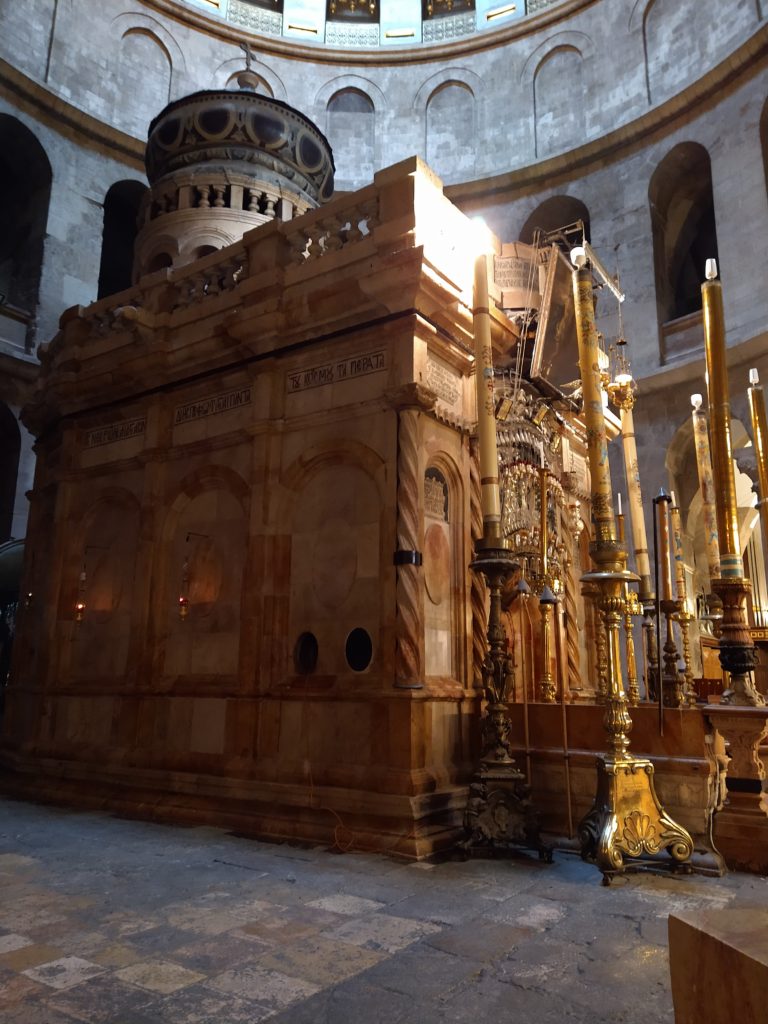
Some argue against the Church of the Holy Sepulchre being the tomb of Jesus because it is inside the current walls of the Old City of Jerusalem. Jewish burials in the Roman period were always outside the city. However, archaeology has demonstrated that Jerusalem was smaller during that period than it is today, and the tomb was indeed outside the city walls in the time of Jesus.7
Christians have identified this site as the tomb of Jesus from at least as early as 300 years after the time of Jesus. However, it is very possible that the identification of the site dates even earlier than that.
The Romans destroyed Jerusalem in 70 AD as a response to the Jewish Revolt. Less than 100 years after Jesus’ death, they rebuilt the city and called it Aelia Capitolina. As part of this rebuilding, the Romans erected a temple to Venus on the site of the tomb. In the ancient world, conquerors usually built temples to their gods on sites that the previous inhabitants had regarded as holy. If this were a common graveyard, it seems unlikely that the Romans would have built a temple there. Instead, it seems that they understood that this was a holy site. This lends credence to the identification of the site as Jesus’ tomb.8
It is currently not possible to be 100% certain that the Holy Sepulchre is the tomb of Jesus. However, it fits each aspect of the biblical description of the tomb and has a longstanding tradition as Jesus’ tomb, so it is the most likely of all the candidates.
Fortunately for Christians, the location of Jesus’ tomb is not crucial, since He is not there anymore!
The Nazareth Inscription
The Nazareth Inscription is a carved marble tablet engraved with Greek writing. It is an edict of Caesar prohibiting tomb-robbing. See the appendix for a full translation of this edict.
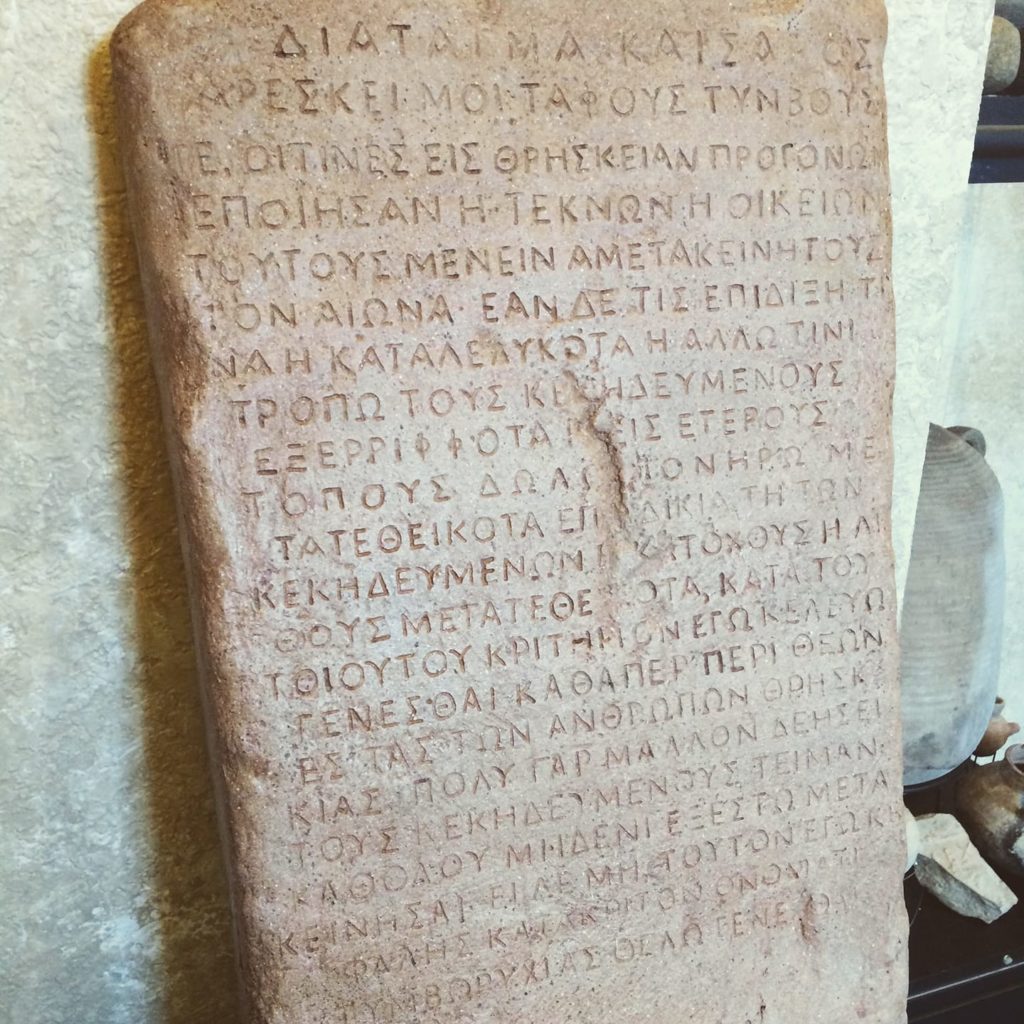
Currently housed in the Paris National Library, the tablet came from a private collection with a note stating, “this marble was sent from Nazareth in 1878.”9 It is unknown whether it was originally from Nazareth or elsewhere. Testing on the stone suggests that the marble originated on the Greek Island of Kos. However, that does not mean that the inscription came from Kos. Marble is not naturally occurring in Israel, so all marble in the region was imported from elsewhere.10 Based on the wording of the text, there is good reason to believe that this inscription was for a Jewish audience. Based on writing style, the inscription dates to the first century AD, probably between 41 and 54 AD.11
This edict is particularly interesting for several reasons. First, since it likely came from Nazareth or somewhere nearby, it was probably intended for a Jewish audience. The type of tomb mentioned in the edict confirms this. It mentions tombs sealed with sepulcher-sealing stones. During this period, Roman tombs were very different from Jewish tombs. Tombs sealed with a stone like the one mentioned in the edict were unique to Jewish burials. Not only was Caesar concerned with Jewish people stealing bodies, he specifically didn’t want them stealing Jewish bodies.
Tomb-robbing was illegal in the Roman empire, and tomb-robbers were charged a fine when caught. This edict changed that. It made tomb-robbing, specifically stealing bodies from tombs, punishable by death.
Another interesting aspect of the inscription is that it targets a very specific crime. It is concerned about people with wicked intentions who destroy a corpse or move it from its tomb to another location. Most tomb-robbers at the time would have targeted the jewelry and other items buried with the corpse. Caesar must have had a very specific reason for imposing the death penalty specifically upon corpse-thieves.
Making Sense of the Nazareth Inscription
So, what does it all mean? Why was Caesar so very concerned about people removing bodies from Jewish tombs?
In the years following Jesus’ death, burial, and resurrection, Christianity spread rapidly throughout the Roman empire. Paul was especially instrumental in spreading the gospel, but many others did so as well. They claimed that Jesus had risen from the dead. Meanwhile, the religious leaders’ explanation, that the disciples had stolen the body, also spread.
Even before official persecution of Christians began in 64 AD, the Romans saw Christianity as a threat. The most logical explanation for the Nazareth Inscription is that Caesar saw Christianity spreading and was concerned about it. He must have heard that the disciples had stolen Jesus’ body from the tomb. His response was to write an edict. Perhaps he sent it to Nazareth, as Jesus’ hometown, or to somewhere in that region since many of the disciples were from the region of Galilee.
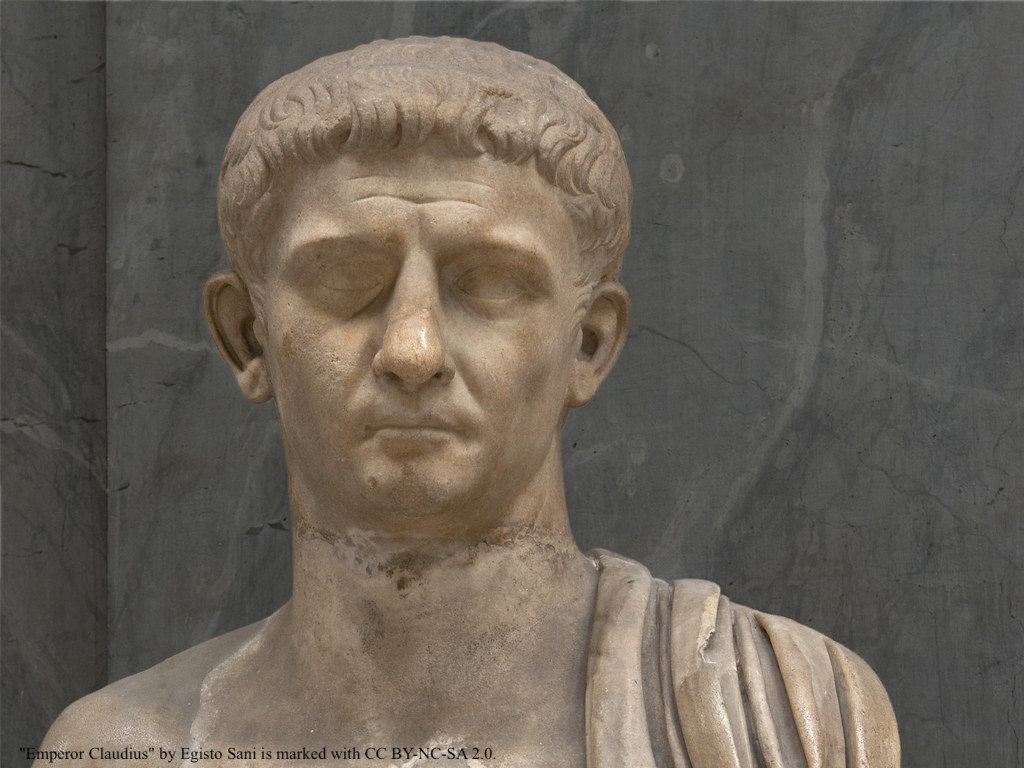
It seems that Caesar believed that Jesus’ body had disappeared and that the disciples had probably stolen it. He specified that it is illegal to destroy or remove corpses, or to move them to another location. Clearly, Caesar did not want any more bodies disappearing from their tombs! That he felt strongly about it is evident because he imposed the death penalty. It seems that he specified the Jewish-style tombs because that was the type of tomb from which Jesus’ body had disappeared. Perhaps Caesar had even heard that Christians had hope of a future resurrection from the dead (Philippians 3:11). He may have been worried that a lot more bodies would disappear, wreaking even more havoc in the empire!
The Testimony of Witnesses
So far, I have established that there is strong evidence suggesting that Jesus’ body disappeared from the tomb. But is there evidence that Jesus rose from the dead? The strongest evidence for this is the testimony of witnesses who saw Jesus after his resurrection. These include the women who went to the tomb, the disciples, Jesus’ brother James, and over 500 other people.12
The witness of the disciples may be the strongest testimony to Jesus’ resurrection. When the religious leaders arrested Jesus, the disciples scattered in fear. Peter repeatedly denied his association with Jesus (Mark 14:50, 66–72). Yet afterwards, they boldly spread the gospel, suffering persecution and, for many of them, martyrdom. No matter what anyone did to them, they refused to renounce their faith in the resurrected Jesus. If it was a conspiracy and the disciples had stolen Jesus’ body and hidden it, it seems impossible that not a single one of them would crack under the pressure and admit to stealing the body.
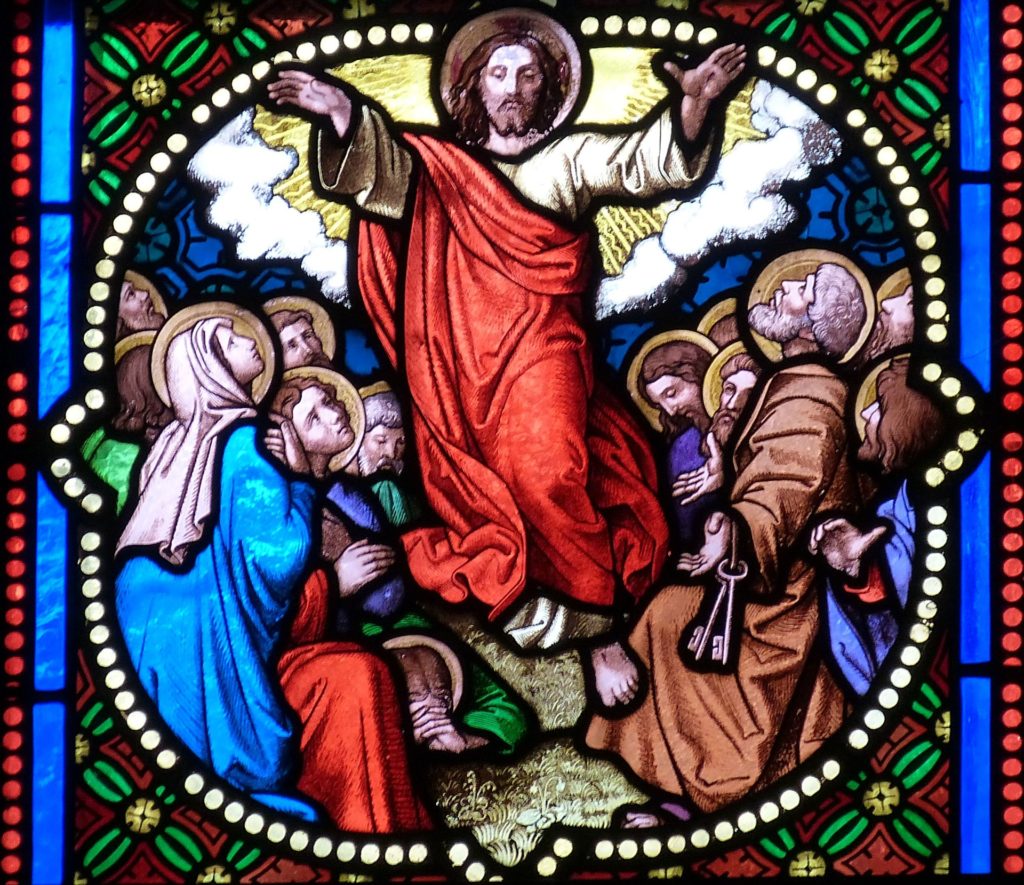
The fact that Jesus appeared to over 500 witnesses after his resurrection is also a strong testimony. Paul mentions this in 1 Corinthians. He notes that most of these witnesses were still alive. That means that if the Corinthians did not believe him, they could check with these people who were eye-witnesses of the resurrected Jesus.
It is also important to remember that the New Testament is not one book written by the same author. If it were, it would be easy to invent all these witnesses. But the New Testament is a compilation of books written at different times by different authors. Thus, each writer acts as a separate witness. Matthew, Mark, Luke, John, Paul, and Peter each individually speak of the resurrection of Jesus. Some of them were eye-witnesses, while others likely interviewed eye-witnesses. They all wrote in the decades following Jesus’ death and resurrection during a time period in which eye-witnesses were still living. Anyone who read these books and had questions could have personally checked with multiple eye-witnesses.
Conclusion
In this article, we looked at theories that try to explain away the resurrection of Jesus and why those theories don’t work. We examined the possible tombs of Jesus and found one that fits the description in the gospels. We looked at the Nazareth Inscription, an artifact from shortly after the resurrection of Jesus that seems to be a response to the disappearance of Jesus’ body. Finally, we looked at the testimony of eye-witnesses to the resurrection of Jesus.
The resurrection of Jesus is crucial for the Christian faith. As Paul wrote, “…if Christ is not risen, then our preaching is empty and your faith is also empty…if Christ is not risen, your faith is futile; you are still in your sins!” (I Corinthians 15:14, 17).
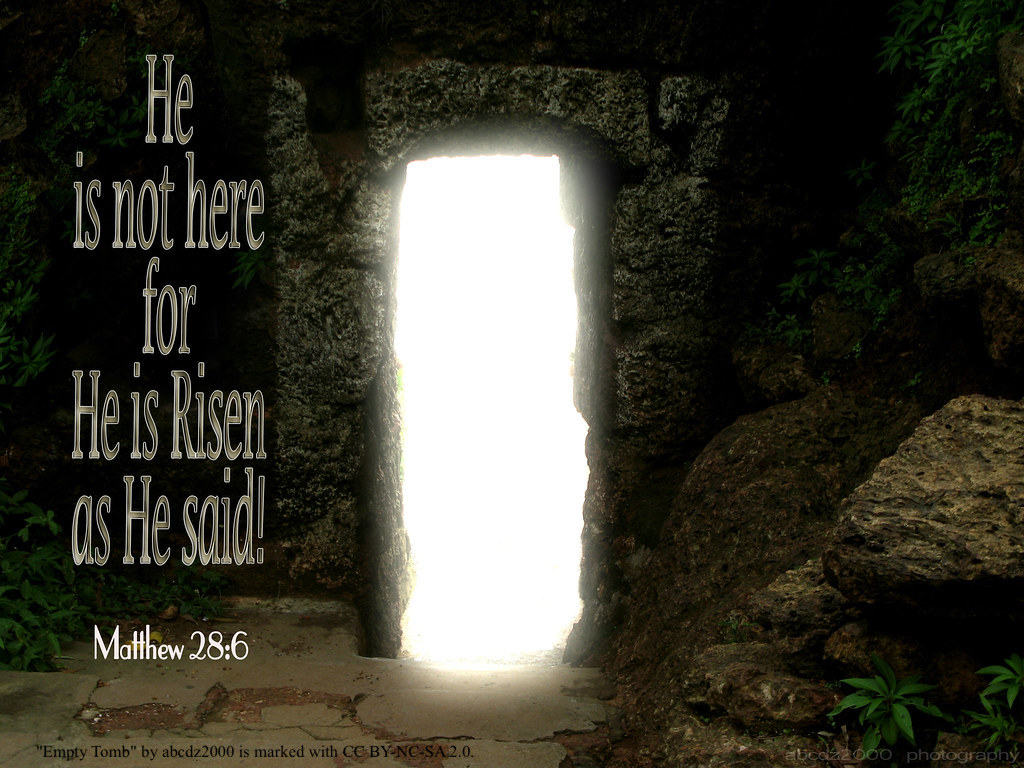
We cannot prove that Jesus rose from the dead because scientific proof requires repeating the experiment. Jesus died only once (Romans 6:10), and thus only rose again once. However, archaeology and textual studies can help us examine the evidence and build a strong case for the validity of the resurrection. That is as far as scientific research can go. Beyond that, we enter the realm of faith. Yes, there is strong evidence that Jesus rose from the dead, but it is up to you to decide if you will personally put your faith in Jesus for salvation and eternal life.
Jesus, the Son of God, died to pay the penalty for the sins of mankind. That includes my sins and yours. When He rose from the dead, He broke the power of death, freeing us from the bondage of death and giving us a hope of resurrection (Hebrews 2:14–15; Philippians 3:11). He is able to save us because He rose from the dead and lives to make intercession for those who come to God through Him (Hebrews 7:25).
Salvation and forgiveness of sins are a free gift for those who put their faith in Jesus. Paul wrote, “…if you confess with your mouth the Lord Jesus and believe in your heart that God has raised Him from the dead, you will be saved.” (Romans 10:9).
Appendix
THE NAZARETH INSCRIPTION
Translated by Clyde E. Billington, Ph.D.
EDICT OF CAESAR
It is my decision [concerning] graves and tombs –whoever has made
them for the religious observances of parents, or children, or household
members –that these remain undisturbed forever. But if anyone legally
charges that another person has destroyed, or has in any manner extracted
those who have been buried, or has moved with wicked intent those who
have been buried to other places, committing a crime against them, or has
moved sepulcher-sealing stones, against such a person I order that a
judicial tribunal be created, just as [is done] concerning the gods in
human religious observances, even more so will it be obligatory to treat
with honor those who have been entombed. You are absolutely not to
allow anyone to move [those who have been entombed]. But if
[someone does], I wish that [violator] to suffer capital punishment under
the title of tomb-breaker.13
Footnotes
- Justin Martyr. Dialogue with Trypho, chapter 108. ↩︎
- Case, Shirley Jackson. 1909. “The Resurrection Faith of the First Disciples.” The American Journal of Theology 13:2, 169–192. ↩︎
- Gromacki, Gary R. “The Historicity of the Resurrection of Jesus Christ: Part 1.” BibleArchaeology.org. ↩︎
- Gromacki, BibleArchaeology.org. (Footnote 3) ↩︎
- Flavius Josephus. The Life of Flavius Josephus, 420. ↩︎
- Barkay, Gabriel. 1986. “The Garden Tomb: Was Jesus Buried Here?” Biblical Archaeology Review 12:2. ↩︎
- Murphy-O’Connor, Jerome. “The Argument for the Holy Sepulchre.” Revue Biblique 117:1, 55–91. ↩︎
- Bahat, Dan. 1986. “Does the Holy Sepluchre Church Mark the Burial of Jesus?” Biblical Archaeology Review 12:3. ↩︎
- Billington, Clyde E. 2020. “The Nazareth Inscription: Proof of the Resurrection of Christ?” Biblearchaeology.org. ↩︎
- Windle, Bryan. 2020. “New Study Questions Context of Nazareth Inscription.” Biblearchaeology.org. ↩︎
- Kennedy, Titus. 2012. “The Nazareth Inscription: Rumor and Reaction to the Resurrection of Jesus.” Apxaioc.com. ↩︎
- Gromacki, Gary R. “The Historicity of the Resurrection of Jesus Christ: Part 2.” BibleArchaeology.org. ↩︎
- Billington, 2020. Biblearchaeology.org. (Footnote 9) ↩︎

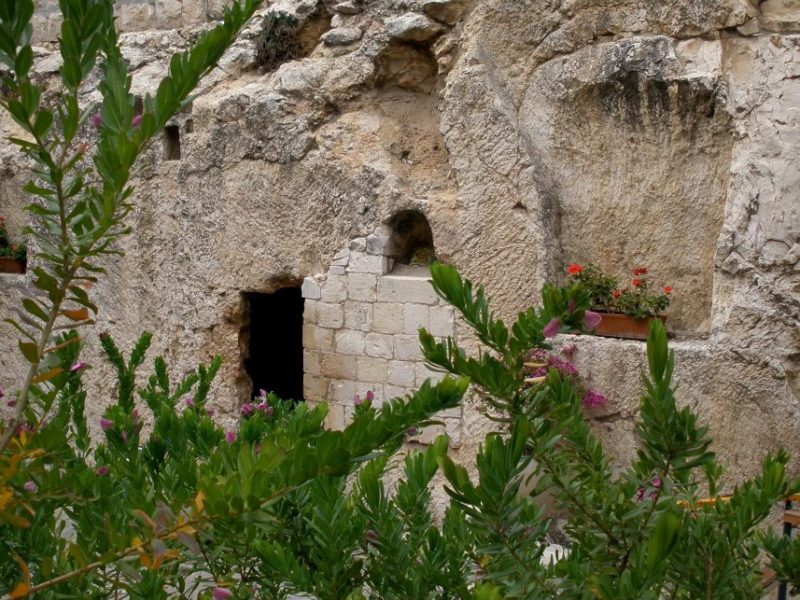
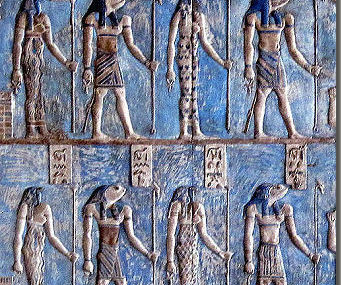

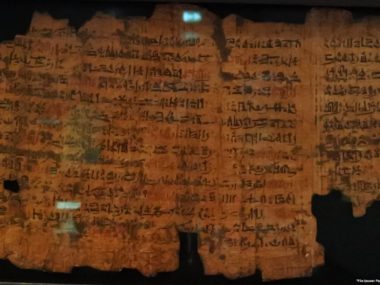
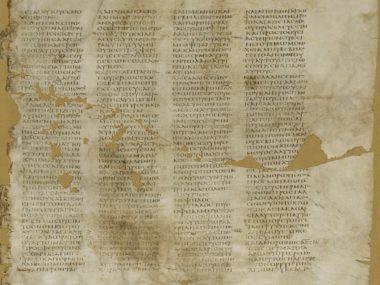
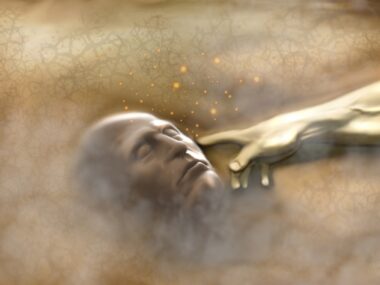


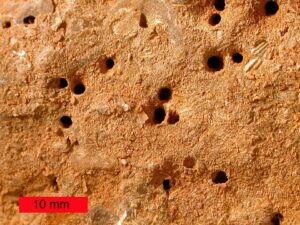
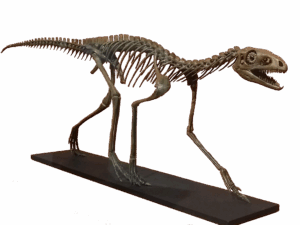
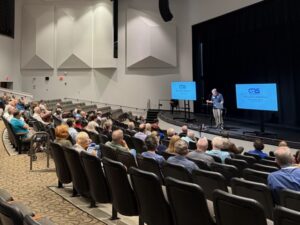
Abigail,
Is there some way I could contact you privately? I would love to have you on my YouTube channel to discuss creationist archaeology. I have a channel called The Byzantine Scotist. Thanks.
In Christ,
Gideon
Hi Gideon,
I’ll get in touch with you.
Regards, Abigail
أستمتعت كثيراً في قراءة التحليل الذكي جداً بالربط
. والخلاصة
لدي سؤال حول اسم (مريمن إي مارا) الواردة بالنقش
هل ممكن هو الاسم العربي المذكور بالقران مريم عمران
I had a lot of fun reading the very smart link analysis
. Conclusion
I have a question about the name (Marymen e Mara) mentioned in the inscription
Is it possible that the Arabic name mentioned in the Qur’an is Maryam Imran?
Hi! Thanks for you question. Maryam Imran mentioned in the Qur’an refers to the mother of Jesus. However, Maryam (Greek = Maria) was a very common name in Judea during the first century, so it would be difficult to prove that Maryam Imran is the Marymen e Mara from the inscription.
Saul of Tarsus, an educated Jew, investigated the evidence for the Resurrection for THREE YEARS…but rejected its historicity until he had his own “heavenly vision”. What does that tell you about the quality of the evidence?
https://lutherwasnotbornagaincom.wordpress.com/2024/07/05/if-the-historical-evidence-for-the-resurrection-did-not-convince-saul-of-tarsus-why-should-it-convince-skeptics-today/
I am not sure where you got your information about Saul. Do you have a source for this? Or is it conjecture? According to the New Testament texts, he persecuted the church, but there is no evidence that he investigated the evidence for the resurrection. I agree that he was an educated Jew, but I would argue that he was biased against Christianity, as were most of the religious leaders, which may have clouded his judgement. It is common for educated people to have blind spots due to bias.
it’s great how christains manage to completely make their myths worthless. If they don’t know where the tomb even is, no reasno to believe the stories in their bible, which can’t agree on what kind of tomb it is at all, nor what happened there. They are all quite the frauds. But nice job of showing shroud of turin is complete fraud, as is everything else in the story.
Why did the women go to Jesus’ tomb on Sunday morning? Answer: to anoint Jesus’ body with spices, right? Christians have heard this story since we were little children. We accept it as fact without a second’s thought. But I want you to reflect on this claim for a moment: Why would anyone place spices on a body that is already buried; a body that has been in a state of decomposition for several days? It makes no sense whatsoever!
This story alone proves that the Empty Tomb Story is fiction. It never happened. It is a work of apologetics. But there is more bad news for Christianity: Jews laugh at the Gospel authors’ claim that Jewish women planned to apply spices to the body of a Jewish man. This is ABSOLUTELY forbidden in Jewish culture. How do I know this? A Jewish rabbi told me.
The most dangerous critic of Christianity living today is not Sam Harris or Richard Dawkins. The most dangerous critic of Christianity living today is a Jewish rabbi: Rabbi Tovia Singer
https://lutherwasnotbornagaincom.wordpress.com/2025/05/17/the-greatest-threat-to-modern-christian-apologetics-rabbi-tovia-singer/
Sincerely yours,
Gary
Author, Escaping Christian Fundamentalism blog